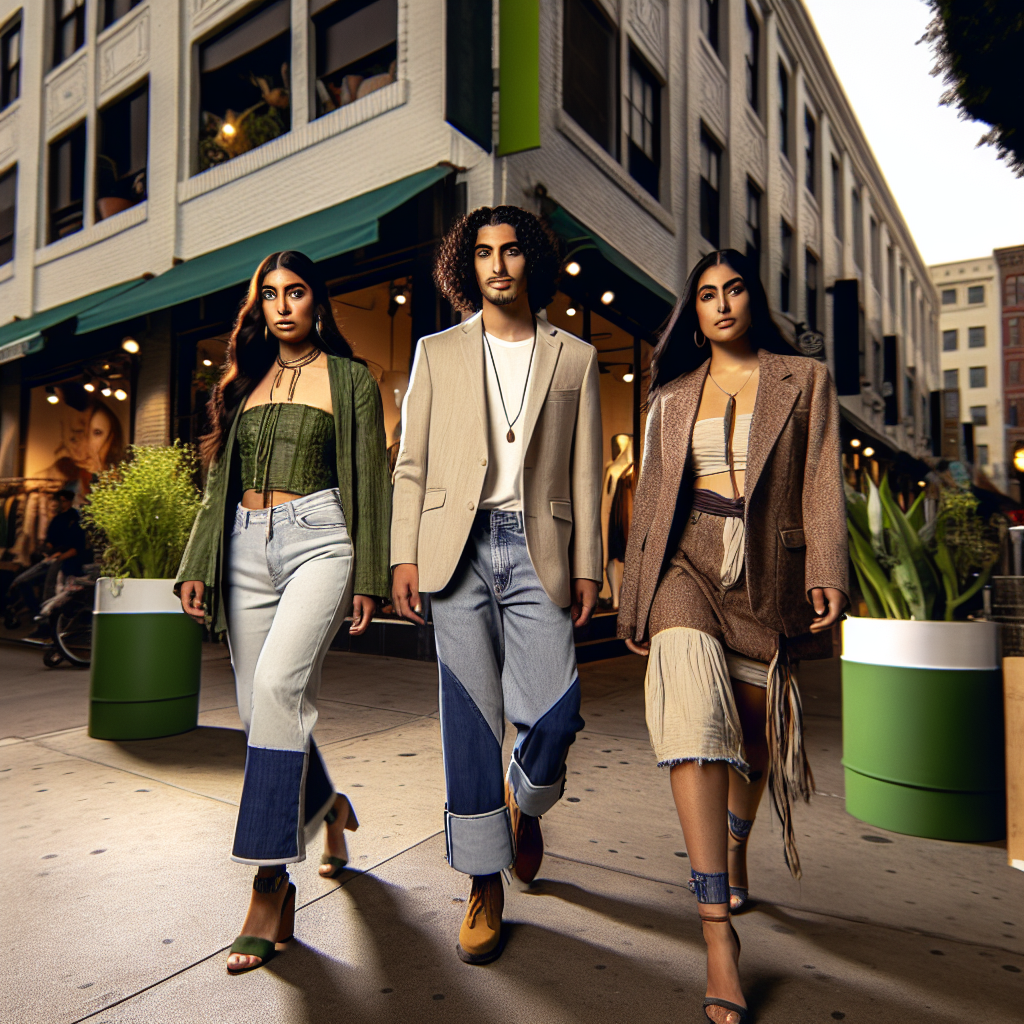
The whispers of sustainable fashion are no longer confined to the quiet corridors of niche eco-boutiques. What began as a murmured movement has blossomed into a robust dialogue, reshaping the fashion industry’s landscape. This transformation from a fleeting trend into a revolutionary approach underscores a growing commitment to environmental stewardship and ethical practices. It is an evolution driven by an urgent need to redefine our relationship with clothing, one that aligns with the realities of resource scarcity and ecological consciousness.
From Consumerism to Consciousness
Fashion has long been synonymous with change and ephemerality, a relentless cycle of trends that fuels consumerism. Yet, amid the vibrant chaos of fast fashion’s rise, a quieter revolution was brewing. According to me, this pivot towards sustainability is not merely a reactive stance to environmental issues but rather an irresistible cultural shift towards awareness and responsibility.
The origins of sustainable fashion are rooted in the 1960s and 70s, eras marked by a burgeoning environmental awareness and a countercultural rejection of the status quo. As globalization intensified and the fashion industry’s impact on the planet became increasingly undeniable, cries for reform grew louder. An anecdote from my own experience reflects this awakening: I recall a conversation with a vintage store owner in Brooklyn, who mentioned how difficult it used to be to convince people of the value in second-hand clothing. Today, not only has the stigma around thrift shopping evaporated, but it has become a badge of honor for those advocating for sustainability.
The Dialogue Between Fashion and Ethics
Sustainable fashion is not a monolithic concept. It encompasses a wide spectrum of practices including ethical labor standards, environmentally-friendly materials, and innovative recycling processes. Brands are increasingly transparent about their supply chains, reflecting a demand for accountability that consumers now expect.
However, an unconventional observation I’ve made is that some brands may exploit the notion of ‘sustainability’ as a marketing ploy rather than a genuine commitment. This ‘greenwashing’ phenomenon, where companies spend more on marketing themselves as eco-friendly than on minimizing their environmental impact, is a critical issue that discerning consumers must navigate.
Materials Matter
The materials we choose to clothe ourselves have far-reaching implications. The transition from synthetics to natural fibers and recycled materials is as much about aesthetics as it is ethics. Organic cotton, bamboo, hemp, and Tencel are increasingly common in sustainable collections, touted for their minimal environmental footprint.
A personal favorite, and perhaps a lesser-known secret, is piñatex, a sustainable leather alternative made from pineapple leaf fibers. It’s fascinating how a byproduct of the food industry can be repurposed into a viable material for fashion, turning waste into something beautiful and useful.
Innovations in Circular Fashion
Circular fashion aims to eliminate waste through the continual use of resources, a concept beautifully illustrated by brands that offer take-back programs or clothing rental services. This is where fashion intersects with innovation, pushing the boundaries of how we consume.
In the realm of personal anecdote, there was a time when I hesitated to rent clothes for fear of damaging them or not getting the full ‘ownership’ experience. But after trying it for a wedding, the idea of a shared wardrobe felt liberating. It represented a shift from ownership to access, from scarcity to abundance.
An Element of Surprise: Longevity Over Novelty
Most discussions around fashion sustainability focus on production and consumption. However, an often-overlooked facet is the longevity of garments. In my opinion, the most sustainable clothes are not just those made ethically, but those we wear and cherish for years. This counters the pervasive belief that newness is synonymous with value.
Consider the timeless appeal of a classic trench coat or a well-cut pair of jeans. These aren’t just staples in our wardrobe; they’re testaments to a time when fashion was about enduring style rather than seasonal fads. A surprising epiphany I had was realizing that my grandmother’s handmade dress, stitched with care decades ago, still holds its own in both craftsmanship and aesthetic appeal.
The Role of the Consumer
Sustainable fashion’s evolution relies not just on industry players but also on consumers who demand change through their purchasing power. It’s about making informed choices and valuing quality over quantity. As consumers, we wield the power to influence the industry by supporting brands that align with our values.
Building a Timeless Wardrobe
Crafting a sustainable wardrobe requires a conscious approach to fashion, one that celebrates versatility and individuality. It’s about curating pieces that can transition across seasons and occasions, pieces that you love not just for the moment they capture but for the stories they gather as they become intertwined with your life.
Invest in craftsmanship. Seek out those garments that are made to last, both in terms of durability and style. Embrace pre-loved fashion, not as a compromise but as a conscious choice towards a sustainable future.
The Future of Sustainable Fashion
Looking forward, I am convinced that sustainable fashion will continue to evolve, driven by technological advancements and a deeper understanding of environmental stewardship. Innovations in fabric technology, such as biodegradable textiles and fabric recycling, will further propel the industry towards sustainability.
The challenge lies not in the absence of solutions but in their implementation and adoption. Education plays a crucial role in this transition, with a need for greater awareness and understanding of the impact our choices have on the environment.
The evolution of sustainable fashion signifies a profound shift in how we perceive clothing. It’s about fostering a deeper connection with the garments we wear and understanding the stories behind them. As this movement grows, it challenges us to redefine our notions of value and beauty, urging us to embrace fashion that not only makes us look good but feel good about the impact we’re making. In embracing sustainable fashion, we are not just choosing what to wear; we are choosing a future rooted in responsibility, innovation, and timeless elegance.
